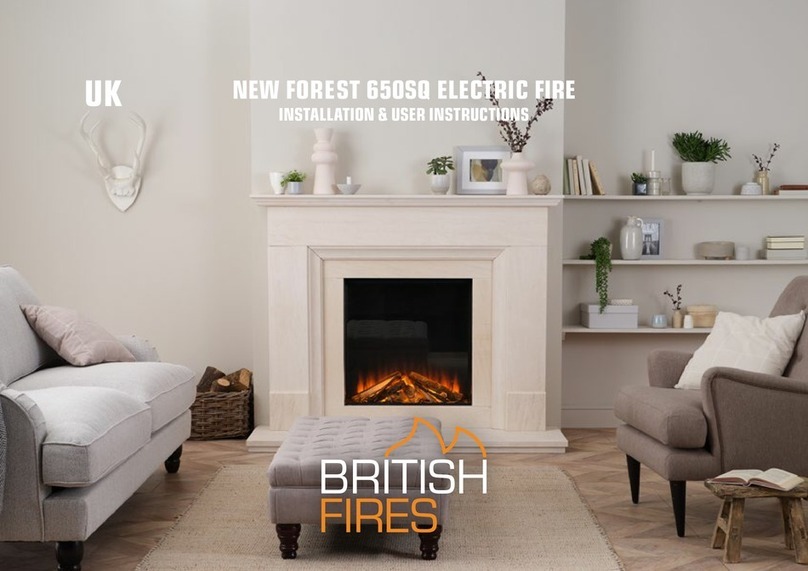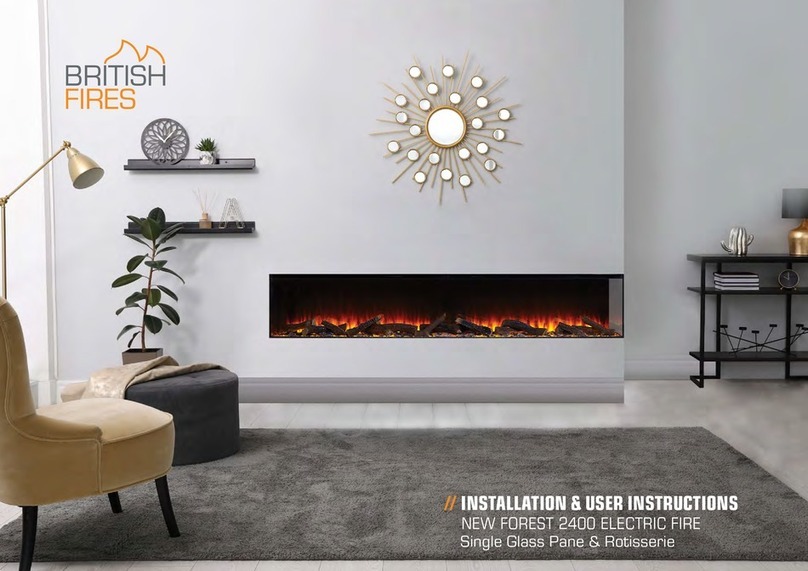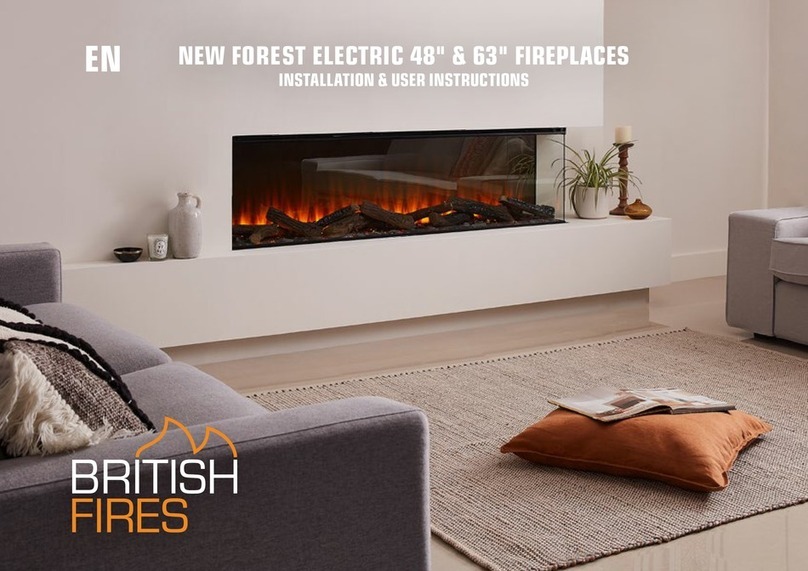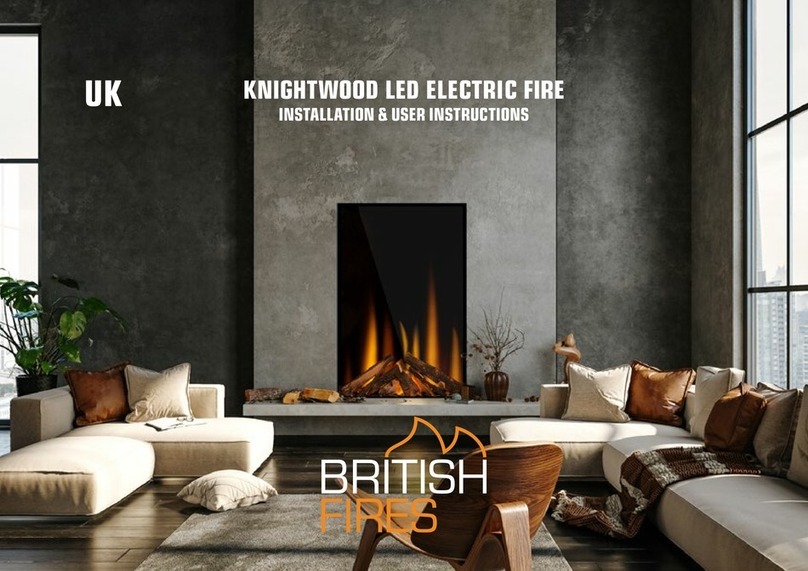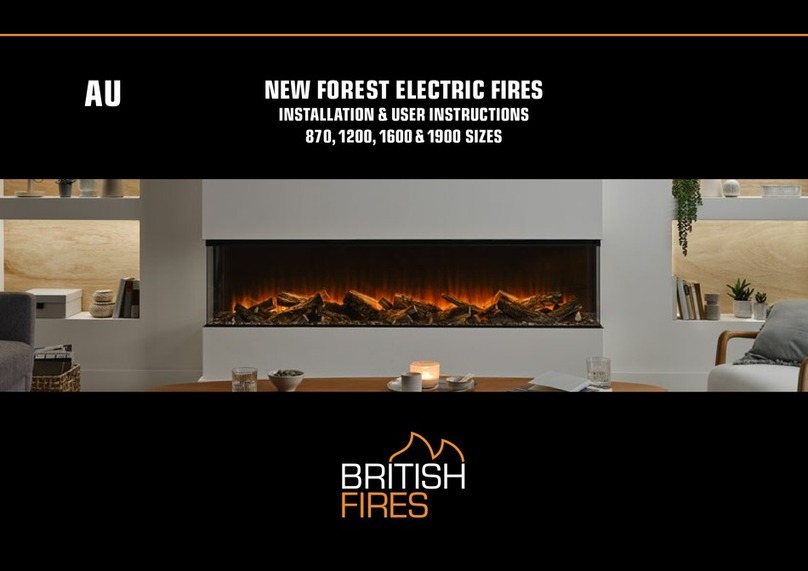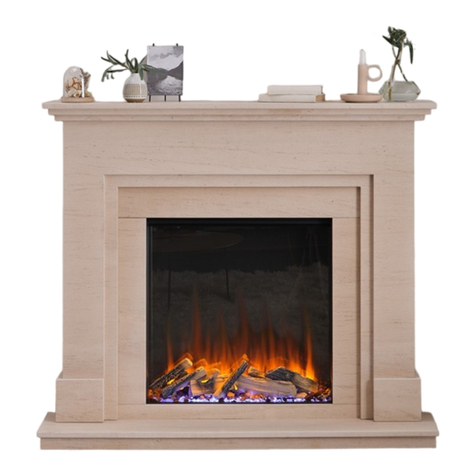
// INSTALLATION & USER INSTRUCTIONS
Section Contents Page
1.0 Important Notes 02
2.0 Installation Requirements 03
3.0 Appliance Data 04
4.0 Component Checklist 05
5.0 Site Requirements 05
6.0 Clearances To Combustibles 06
7.0 Unpacking the Appliance 06
8.0 Preparing the Appliances – Part 1 07–23
8.0 Altering the Corner Bracket 07
8.1 Wall Bracket and Side Brackets (Floating install) 08
8.2 Attaching L-shaped Brackets 09
8.3 Studwall Fixing – False Chimney Construction 10–13
9.0 Preparing the Appliances – Part 2 14–24
9.0 Blanking Plates & Removing Front Glass 14
9.1 Aligning Fireboxes & Preparing Internal Parts 15–24
10.0 Installation 25–30
10.1 Studwall 26–28
11.0 Forest View Fuel Bed Layout 29–30
11.1 Slate Fuel Bed Layout 31–32
11.2 Diamond Light Fuel Bed Layout 33
11.3 Deluxe Real Logs (Optional Upgrade) 34
12.0 Pairing The Remote Control 35
13.0 Operating The Appliances 35–39
14.0 Safety Cut-out System 40
15.0 Cleaning and Maintenance 40
16.0 Troubleshooting Guide 41
17.0 Spare Parts 42–43
18.0 Servicing 44
19.0 Appliance Dimensions 45
20.0 Three Year Guarantee – Terms and Conditions 46
// 1.0 IMPORTANT NOTES
Important – these instructions should be read carefully and retained for future reference.
When using the electrical appliances, basic precautions should
be followed to reduce the risk of fire, electric shock and injury to
person, including the following:
The heaters must be used on an AC supply only and the voltage
marked on the heater’s rating label must correspond to the supply
voltage.
DO NOT switch the appliances on until it is properly installed as
described in this manual.
These appliances can be used by children aged from 8 years
and above and persons with reduced physical, sensory or mental
capabilities or lack of experience and knowledge if they have been
given supervision or instruction concerning use of the appliances in
a safe way and understand the hazards involved. Children shall not
play with the appliances. Cleaning and user maintenance shall not be
made by children without supervision.
Children of less than 3 years should be kept away unless
continuously supervised. Children aged from 3 years and less than
8 years shall only switch on/off the appliances provided that it has
been placed or installed in its intended normal operating position
and they have been given supervision or instruction concerning
use of the appliances in a safe way and understand the hazards
involved. Children aged from 3 years and less than 8 years shall
not plug in, regulate and clean the appliances or perform user
maintenance.
CAUTION: Some parts of these appliances can become very hot and
cause burns. Particular attention has to be given where children
and vulnerable people are present.
Check that all parts included are intact and not damaged. If the
supply cord is damaged, it must be replaced by the manufacturer,
its service agent or similarly qualified persons in order to avoid a
hazard. Never use either of the appliances if the cord or any part
of each appliance shows signs of damage. The heaters must not be
located immediately below a socket-outlet.
DO NOT use heaters in the immediate surroundings of a bath, a
shower or a swimming pool.
WARNING: In order to avoid overheating, do not cover the fans of heaters.
DO NOT use heaters with a programmer, timer, separate remote-
control system or any other device that switches the heaters on
automatically, since a fire risk exists if the heaters are covered or
positioned incorrectly.
CAUTION: In order to avoid a hazard due to inadvertent resetting of
the thermal cut-out, the appliances must not be supplied through an
external switching device, such as a timer, or connected to a circuit
that is regularly switched on and off by the utility.
WARNING: The heaters are not equipped with a device to control the
room temperature. Do not use the heaters in small rooms when
they are occupied by persons not capable of leaving the room on
their own, unless constant supervision is provided.
Keep furniture, curtains and other fabric material away from
appliances.
DO NOT leave the appliances unattended during use.
DO NOT run the mains cable under carpets, rugs etc.
DO NOT cover or obstruct the heaters in any way. Overheating
will result if it is accidentally covered.
Never immerse the appliances in water or any other liquids.
DO NOT use the appliances outdoors.
Before cleaning the appliances, ensure it is unplugged from the
power and that it is completely cool.
DO NOT clean the appliances with abrasive chemicals.
Never use accessories that are not recommended or supplied by
the manufacturer. It could cause danger to the user or damage to
the appliances.
DO NOT insert or allow foreign objects to enter the inlet or outlet vents
as this may result in electric shock, fire or damage to the appliances.
DO NOT install the fire using an extension cord.
Unplug from the mains supply if the appliances are not to be used
for long periods.
Both appliances are only suitable for well-insulated spaces or
occasional use.
DO NOT use these appliances in an open flue.
// 02© 2022 British Fires
